Animal Primal is the next great pre-workout supplement from Team Animal at Universal Nutrition, anchored by 3DPUMP and ~310mg caffeine!
It's been tough to keep up with Animal and the team at Universal Nutrition lately. Their successful string of Animal Cuts Powder product releases brought the brand new awards, so they added Animal Cuts Non-Stim.

Animal's latest full-spectrum pre-workout is here: Animal Primal, and it has the new 3DPUMP Breakthrough!
Then, from out of nowhere, the delicious Animal Beef Biltong was released, and it's about as amazing as one could imagine. So we've got weight loss and high-protein snacks covered, but it's time to get back to pre-workouts.
Animal Primal: A powerful 3DPUMP-based pre-workout supplement
Animal already has a strong-yet-simple Animal Fury, but today, it's time to prime up the complexity a bit, with the fully-dosed Animal Primal.
Animal Primal is Universal Nutrition's first foray into the new 3DPUMP Breakthrough ingredient, a patented combination of citrulline, glycerol, and amla fruit extract. It's the first stimulant-based 3DPUMP-based supplement we've covered that doesn't use controversial anxiety-inducing ingredients, but still keeps it strong at ~310 milligrams of total caffeine coming from a few sources.
Primal fits perfectly into the advanced pre-workout supplement slot for Team Animal, yet isn't over the top. It leans heavily on hydration, with a series of ingredients that will have your body in cell volumization mode and beyond. This has all the components for a "swole" effect (3DPUMP's glycerol, betaine, taurine, and electrolytes), so make sure you're ready to drink some water to feel the flow.
We're excited for this one. The whole story's covered below -- but first, check PricePlow's coupon-based prices:
Universal Animal Primal – Deals and Price Drop Alerts
Get Price Alerts
No spam, no scams.
Disclosure: PricePlow relies on pricing from stores with which we have a business relationship. We work hard to keep pricing current, but you may find a better offer.
Posts are sponsored in part by the retailers and/or brands listed on this page.
Animal Primal Ingredients
In two scoops (20.3 grams), you'll get the following ingredients alongside a total of ~310 milligrams of caffeine and 10 calories from 3 grams of carbs:
-
Primal Pump Complex - 3DPUMP Breakthrough [L-Citrulline, Glycerol, Amla (Phyllanthus emblica) Fruit Extract] - 6000mg
On top of ~310mg caffeine, there are four ingredients (or sets of ingredients) here in Primal to get you that crazy "swellular" feel!
The sport supplement industry's hottest new patented[1] ingredient, 6 grams of 3DPUMP Breakthrough provides:
- 3 grams of L-citrulline for nitric oxide production
- 1.2 grams of glycerol for cell volumization and hyperhydration
- 165 milligrams of amla fruit extract for enhanced blood flow and delivery
What's cool about 3DPUMP's patent is that it includes a small pilot study that gives us some hints about its efficacy. In this pilot study, the researchers recruited weight trained young men and ran four different leg days (each spaced at least 3 days apart), measuring total body mass and thigh circumference each time.[1]
The four groups were:
- Water (functioning as a control)
- 1.5 grams of 65% yield glycerol
- 150 milligrams of amla fruit extract (note that this is actually less than what's in the commercially-available 3DPUMP)
- 1.35 grams of 65% yield glycerol and 150 milligrams of amla fruit extract (same note as above)
After each identical leg day, the researchers found that the glycerol + amla group had far greater results![1] This group achieved a 2.21 centimeter increase in thigh circumference (that's a sick pump) and a 693.1 gram average increase in total body mass. Compare to the placebo group, which had a 1.12 centimeter thigh circumference gain yet only 30.4 grams of total lean body mass added.[1]
Some key information is that the amla-only group performed better than glycerol-only, leading us to believe that amla is doing something special here. So let's dig into that portion first:
-
Amla fruit extract - 165 mg
Called the ayurvedic wonder by researchers,[2] amla is also known as Indian Gooseberry and Phyllanthus emblica. It's long been used for its cardiovascular health supporting properties, helping to improve endothelial function while reducing platelet aggregation thanks to its antioxidants and tannins inside.[3]
Aside from the patent's pilot study, there isn't much athletic research on amla, but it's common to see ingredients that improve endothelial function and blood flow to be quite promising in pre-workouts. We asked 3DPUMP's creators, and found that they're extracting for a majority of low-molecular weight tannins (LMWt tannins), especially emblicanin-A, emblicanin-B, pedunculagin, and punigluconin.[4]
These tannins are important because the body can convert them into urolithins A, B, C, and D,[5] demonstrated to boost mitochondrial output and overall health.[6] Even better for Animal Primal purposes, urolithin B is known to be anabolic.[7]
Finally, some users report an improvement in focus with 3DPUMP, and that may be because there are some nootropic effects shown in animal models.[8]
All in all, Amla seems to be the secret weapon in 3DPUMP -- here to boost two other well-known entities, citrulline and glycerol:
-
L-Citrulline - 3 grams
Anyone who's been following Animal likely knows about the nitric oxide booster L-citrulline, which we've covered in other pre-workouts like Animal Fury and Animal Pump. 3 grams of L-citrulline is comparable to 6 grams of citrulline malate, which has been shown to significantly boost nitric oxide production[9] by way of its conversion to L-arginine.[10]
The Arginine Biosynthesis System. Image courtesy Wikimedia, with our red edits demonstrating the arginine citrulline cycle at the top-right
The L-citrulline to L-arginine to nitric oxide conversion leads to vasodilation, an effect where the blood vessels relax and widen, leading to better blood flow.[11,12] While most medical researchers are in it for the reduction in blood pressure,[13] we're in it for the pumps!
This effect leads to great workout benefits like greater work output, improved recovery, and more cellular energy,[14-16] backed up with a solid meta-analysis.[17]
Citrulline alone works better for these purposes than arginine alone,[11] although we've written about how citrulline and arginine in Animal Pump used together have great synergy too. If choosing one or the other, we always choose citrulline, since arginine supplements get broken down too quickly in the digestive tract.[11,18,19]
With our blood flow and nitric oxide angle covered, now we work on hydration:
-
Hyperhydration with glycerol
Animal Primal has several other hydration-improving ingredients (taurine, betaine, key electrolytes), but it all starts with the glycerol in 3DPUMP. Glycerol is a biologically critical sugar alcohol that serves as a backbone for many other molecules.[20] When loaded and bound with water, it helps improve and maintain the body's total volume of water,[21] getting more into blood and muscle tissue.[22]
When the going gets tough in the final loop of this heat-based event, the glycerol group pulled through far faster at the end.[23]
This leads to volume, and that volumization provides a pump!
With enough glycerol and water taken, athletes achieve an effect that researchers call hyperhydration.[22,24-26] There are numerous studies showing such an effect leads to improved endurance,[21,24,25,27] and some even showing improvements in anaerobic power on top of aerobic output.[26]
Other studies have found that glycerol improved blood flow by improving hydration status,[24] an effect that should synergize with the other ingredients in Animal Primal. The better hydration also leads to better heat tolerance,[23-25] so this is the kind of pre workout you'd want to take if training in heat -- especially with the added electrolytes -- although you may want to be careful of too many stims.
With this trifecta of ingredients, 3DPUMP is one of the most popular new ingredients in sports nutrition.
2023 Update: New research has surfaced on 3DPump showing it comparing similarly to 8 grams of L-citrulline! Read about it in our article titled 3DPump Breakthrough STUDY: 6g Takes on 8g L-Citrulline.
-
Endurance & Performance Complex
As mentioned above, there are a few more hydrating and endurance-promoting ingredients beyond glycerol:
-
Beta-Alanine (as CarnoSyn) - 3200mg
Most athletes know of carnosine-generating[28,29] beta alanine, the amino acid that brings muscular endurance.[30,31] It does this because carnosine helps buffer lactic acid out of muscle tissue, resulting in greater endurance.
There have been dozens of research studies on beta alanine, and the consensus from two different meta analyses shows that it's great in most types of sports and training situations that range from 30 seconds to 10 minutes long.[30,31]
The carbonate connection!
Section A shows beta alanine with sodium bicarbonate (which we have here!) while section B is beta alanine alone[31]
Animal did something here in Primal that most other brands are not doing -- they've combined beta alanine with carbonate in two forms lower on the label (sodium bicarbonate and calcium carbonate). This is worth mentioning because several trials have studied beta alanine alongside carbonate, and the 2016 meta-analysis concluded that "Co-supplementation with sodium bicarbonate resulted in the largest effect size when compared with placebo".[31]
So why don't more brands include sodium bicarbonate like Animal did here? We don't know... but it seems to work extremely well.
The 3200 milligrams dosed in Animal Primal is the clinically supported daily dose. However, it's worth noting that many of those studies split doses throughout the day, while this is all in one shot. We're fine with this, so long as carnosine levels get to achieve a greater saturation.
With such a dose, users may achieve a tingling effect known as paresthesia, but the good news is that a 2019 safety study found that beta alanine is non-toxic and "does not adversely affect those consuming it".[32]
-
Betaine Anhydrous - 2500mg
Back to hydrating ingredients to synergize with glycerol, we have betaine. Also known as trimethylglycine, this ingredient is both a methyl donor and an osmolyte, helping to improve hydration and water regulation throughout the body.[33,34]
There are tons of benefits from betaine, and many of the studies used this 2.5 gram dose:
The placebo effect was definitely strong with this group. But... the real gains obliterated placebo in due time![35]
- Better athletic performance[36-41]
- Improved muscle gains[35,42]
- Greater fat loss / weight loss[43,44]
- Cardiovascular health improvements[34,36,45-47]
- Protection from heat[36,48]
Since it's more than an osmotic, the benefits of betaine supplementation go beyond just hydration and endurance - the muscle building and fat loss studies are impressive on their own, using the 2.5 gram dose.[35,42,43,47-50]
It also turns out that 3DPUMP isn't the only nitric oxide booster inside -- betaine has been shown to help with that too.[47] We'll get a similar and light bump from taurine, which comes next:
-
L-Taurine - 1000mg
Glycerol and betaine (and electrolytes) not enough for you? Then get even more cell hydration through another osmolyte, taurine.[49] Although its mechanisms aren't fully understood, taurine provides a mountain of benefits to the mitochondria, the cell's "powerhouses".[51]
Taurine's effects are quite varied, and are exhibited throughout the body. For instance, it can increase endurance, help reduce oxidative stress, improve bile production (for better fat digestion), and lead to stronger muscle contractions.[49,50,52] It's generally in pre-workout supplements for its osmolytic hydration benefits and improvement of endurance.[52]
Although it's not technically an essential amino acid, one review titled Taurine: A "Very Essential Amino Acid", tends to think it is.[49] This is because the body can generate some, but is almost always better with more (this is commonly known as a "conditionally essential amino acid").
A major 2018 meta-analysis looked at all available taurine studies with regards to endurance, and found that it significantly works, and on its first use.[52] Not only that, but the clinically-verified doses are from 1-6 grams, which we have here.
Like other parts of this formula, there are also some cognitive benefits[50] and a touch of nitric oxide support as well.[53]
Hilariously, we're still not done with the hydration aspect of Primal, because electrolytes are also in this incredible formula!
-
-
Focus & Intensity Complex
Here's where the pump meets the bite - we'll see about 310 milligrams of caffeine with some added focus help below:
-
L-Tyrosine - 1000mg
Need some focus and vigilance, especially in times of low sleep? Then put L-tyrosine on your list. This non-essential amino acid helps your body produce more epinephrine, norepinephrine, and dopamine,[54] feel good neurotransmitters involved in mood and stimulus response that can help reduce stress and anxiety.[55,56]
This effect generally helps improve focus, anecdotally through enhanced vigilance. One of the great areas of research on L-tyrosine is with respect to sleep deprivation -- it consistently helps improve focus, performance, and overall cognition when under duress in times of low sleep.[57,58] The effect seems to synergize with caffeine very well, and as we'll see, we've got that coming from a few forms.
In our articles on Animal Cuts Powder, we also explore other mechanisms such as tyrosine's role as a thyroid hormone precursor,[59,60] which is also very important for energy and metabolism.
-
Choline Bitartrate - 300mg
You asked, Animal listened -- Animal Cuts Non-Stim is here!
To further the focus effect, we have a small dose of choline bitartrate, which provides membrane-supporting choline.[61] It's included in Primal's Focus & Intensity Complex because choline serves as a precursor to acetylcholine,[62] also known as "the learning neurotransmitter". Acetylcholine helps heighten transmission between neurons, improving memory consolidation (forming long-term memories from short-term ones).
In our Animal Cuts Powder daily fat burning stack article, we also talk about how choline is great for fat oxidation[63-66] and improving the body's carnitine retention,[67-69] but there's no carnitine in Primal so we won't dive too deep on that synergy here.
This dose provides a 20% daily recommended amount of choline, which is nice, but you'll likely want to get more in through food -- whole eggs are generally the best way. Avoiding choline deficiency is critically important in combating metabolic disease states.[70]
-
Caffeine Anhydrous - 300mg
You can't call it a Primal pre-workout without some caffeine, the popular energy-enhancing molecule that everyone's familiar with by now. We'll have a bit more caffeine added to Primal from the Herbal Energy Blend below, topping us off at around a 310 milligram total.
We've covered caffeine countless times (such as with Animal Fury and Animal Cuts Powder) -- it works by blocking the brain's adenosine and phosphodiesterase receptors.[71] This lowers fatigue and boosts neural activity.
Additionally, caffeine can slightly increase the body's fat oxidation rates,[72-74] so we'll gladly take that extra energy for our Primal-driven workouts.
This is a strong dose that's not over-the-top, though.
-
Herbal Energy Blend (Green Tea Leaf Extract, Coffee Bean Extract, Guarana Seed) - 200mg
The Herbal Energy Blend that's popular in many of the Animal Cuts family of products is here to help provide a bit more energy! The caffeine will only be about 10 milligrams, but here we get added polyphenols that work very well alongside the stimulant, as they are found in their natural state.
-
We often call green tea extract the "metabolic catch-all", as its EGCg component (and other polyphenols) can boost thermogenesis and improve fat oxidation, amongst many other metabolic benefits.[75,76]
-
Coffee bean extract also has great polyphenols such as chlorogenic acid, and its consumption is associated with improved weight loss[77] and better insulin sensitivity along with other metabolic marker improvements.[78]
-
Guarana has been shown to work well alongside green tea up above,[76] with one study showing that participants using it could complete memory and attention tasks significantly faster.[79]
We always enjoy added caffeine-based plants alongside our caffeine, which brings a bit of natural synergy to the energy blend. Caffeine comes packaged with these extracts, so it could be easily argued that we're meant to take it with its natural co-factors as Primal provides here.
-
-
Theacrine (as TeaCrine 40%) - 50mg
Animal Primal isn't just about caffeine - we have a great herbal energy blend below but also theacrine here! This molecule found in kucha tea leaves is a "cousin" of caffeine's,[80] and helps prolong the energy component of supplements. Studies have demonstrated that theacrine can increase mood, cognition, physical performance, and overall energy levels.[81]
Theacrine is similar to caffeine, but definitely not the same, providing a possibly far longer lasting effect.
Theacrine has some similar mechanisms to caffeine, such as its ability to block adenosine receptors.[82] Additionally, however, it can trigger feel-good dopamine receptors.[80] But what's really impressive is that it can do so without a blood pressure spike![83]
-
Huperzine A (Huperzia serrata extract (whole grass)) - 100mcg
Huperzine A stacks with choline above, since it's an acetylcholinesterase inhibitor,[84] which means that it inhibits the enzyme that breaks down acetylcholine. This keeps our choline-boosted acetylcholine around a bit longer, and huperzine A can thus improve cognitive function and memory.[85]
There's also mitochondrial protection with huperzine A,[86] which should work well with taurine on top of the choline synergy.
-
-
Electrolytes & Hydration
Creatine Gummies were recently discovered to fail NOW Foods' testing - 46% failed testing! But Animal Creatine Chews are built different.. and better.
- Sea Salt
- Monopotassium Phosphate
- Sodium Bicarbonate
- Magnesium Chelate
- Calcium Carbonate
Throughout this article, we've touched on the hydrating components of Primal -- namely 3DPUMP's glycerol, betaine, and taurine. That water is kept in check with a spread of mineral electrolytes to keep ions moving and to maintain proper levels with all the extra water taken in (and lost) during workouts.
Sea salt is the majority ingredient here, with plenty of underrated athletic benefits.[87] We've also discussed how the sodium carbonate works best with beta alanine,[31] and we could argue that calcium carbonate assists with that as well. Don't overlook this part of the label. If salt is tasting good to you, that's your body's way of telling you to take more!
-
Absorption and Nutrient Enhancers
Animal went with two popular NuLiv Science ingredients to close off the label, and we love seeing how they used 25 milligrams of each as opposed to 50 milligrams of just one or the other:
-
AstraGin (Panax notoginseng and Astragalus membranaceus (root) Extracts) - 25mg
One of the best ways to boost the bioavailability of other ingredients in your supplement is to include NuLiv Science's AstraGin, a patented astragalus and ginseng extract. AstraGin comes with data showing that it can boost the uptake of citrulline,[88] which we have here in Primal.
The ingredient works by boosting gut permeability, which allows the intestinal walls to absorb more nutrients, getting them into the body.[88] It also increases transporters for nutrients -- CAT1, SGLT1, and GLUT4 to name a few.
Since 3DPUMP includes citrulline, we can provide you NuLiv Science's data on improved uptake with AstraGin:
One of AstraGin's most popular use-cases is its ability to enhance citrulline absorption - especially right when we'd want it: during our workout![88]
But that's not all we're getting from NuLiv:
-
Senactiv (Panax notoginseng (root) and Rosa roxburghii Tratt (fruit) Extracts) - 25mg
We don't always see these two paired together, but we love it when we do. This time, we're talking about Senactiv, a senolytic ingredient also from NuLiv Science. Senoltyics help the body clear out old, dying cells (senescent cells) to make way for fresh, new, functional cells.
Senactiv is backed by four human studies and two in-vivo experiments on its constituents.[89-94] One study had humans take Senactiv's ginseng component (or placebo) an hour before exercise, and muscle biopsies showed that those who used it had better glycogen replenishment and reduced inflammation compared to the placebo group.[90] Additionally, VO2max improved by 20% in the Senactiv-ginseng group![90]
More recent research has shown reduced perceived exertion and lowered endothelial progenitor cell (EPC) aging and tissue inflammation.[94]
So while we see Senactiv in the "Absorption and Nutrient Enhancers" blend in Primal, it's actually another endurance promoting and recovery ingredient, pairing very well next to taurine, glycerol, and citrulline. It may promote better uptake through the glycogen replenishment mechanism, but anecdotally, we get most excited about our endurance effects from it.
-
Flavors Available

Animal Primal launched in two flavors, but we're guessing this is going to be a successful launch and more flavors will eventually come. Stay tuned to this area and to the PricePlow Blog!
Conclusion: It's Primal Time, and then it's Biltong Time
This is quite the pre-workout. While Animal Fury keeps it strong and simple, Animal Primal gets far more complicated, and goes above and beyond citrulline with the 3DPUMP inclusion.
We've recently been all over the Animal Cuts Powder phenomenon, which has grown to be a best-selling fat burning drink. It's so popular that many users wanted to mix it with their favorite stimulant-based supplements, so they came out with Animal Cuts Stim-Free. We're happy to report that it would stack spectacularly with Animal Primal here, adding carnitine and even more choline to the mix.
Alternatively, for those chasing even greater pumps, Animal Pump Pre-Workout Non-Stim makes for a fantastic stack with Primal too.
But in reality, Animal Primal stands on its own, and doesn't need any extra stacking for the vast majority of us. But it's great to see how powerful of a product line Animal has put together recently!
Next up? Animal Beef BILTONG!
Universal Animal Primal – Deals and Price Drop Alerts
Get Price Alerts
No spam, no scams.
Disclosure: PricePlow relies on pricing from stores with which we have a business relationship. We work hard to keep pricing current, but you may find a better offer.
Posts are sponsored in part by the retailers and/or brands listed on this page.

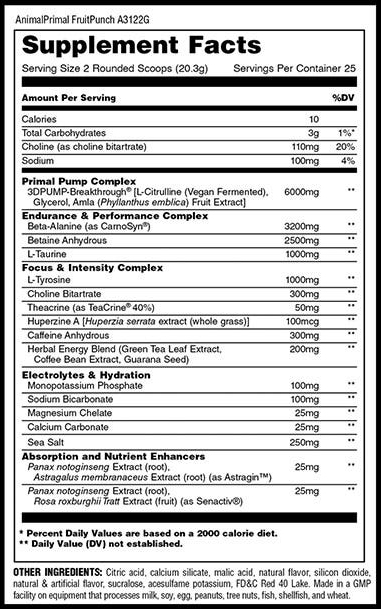
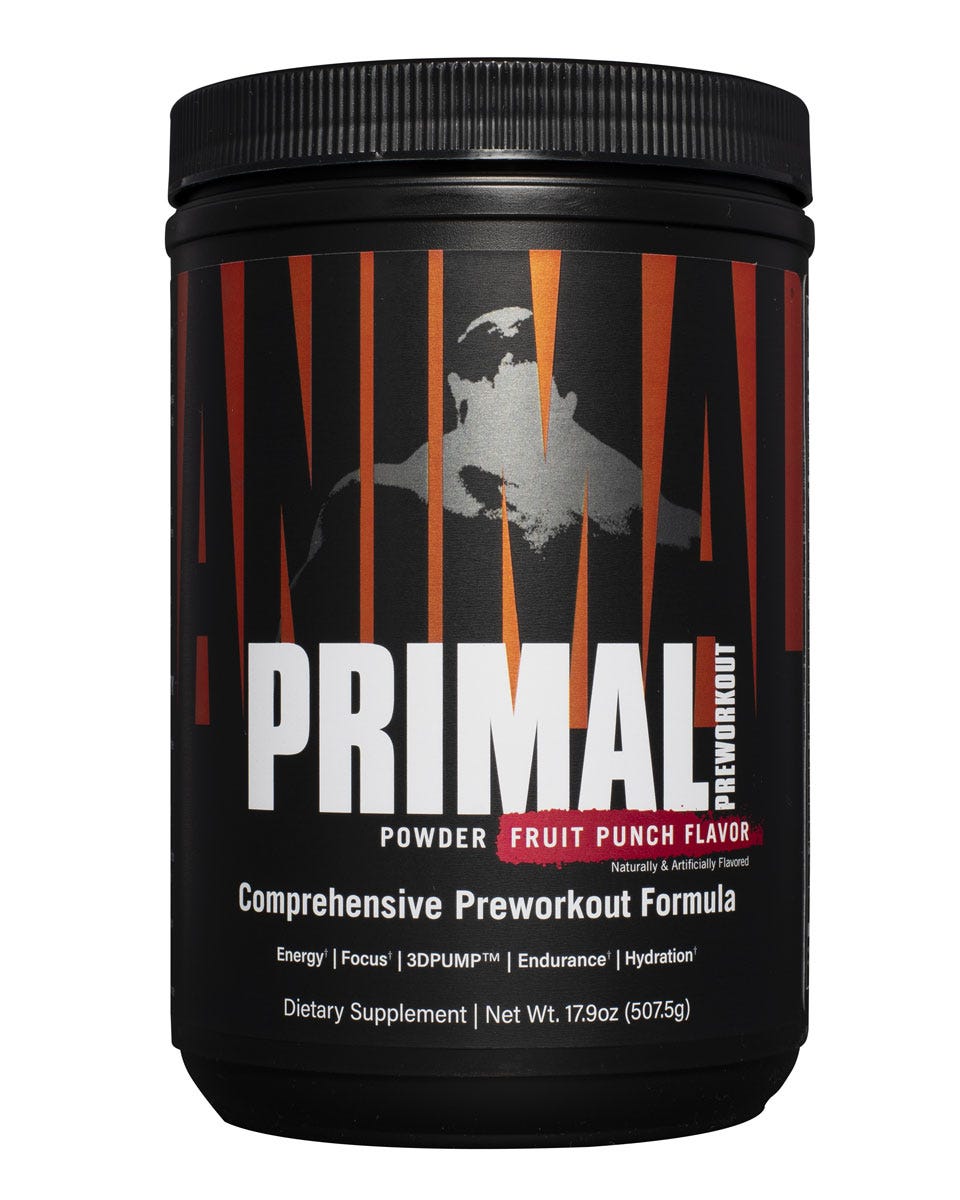
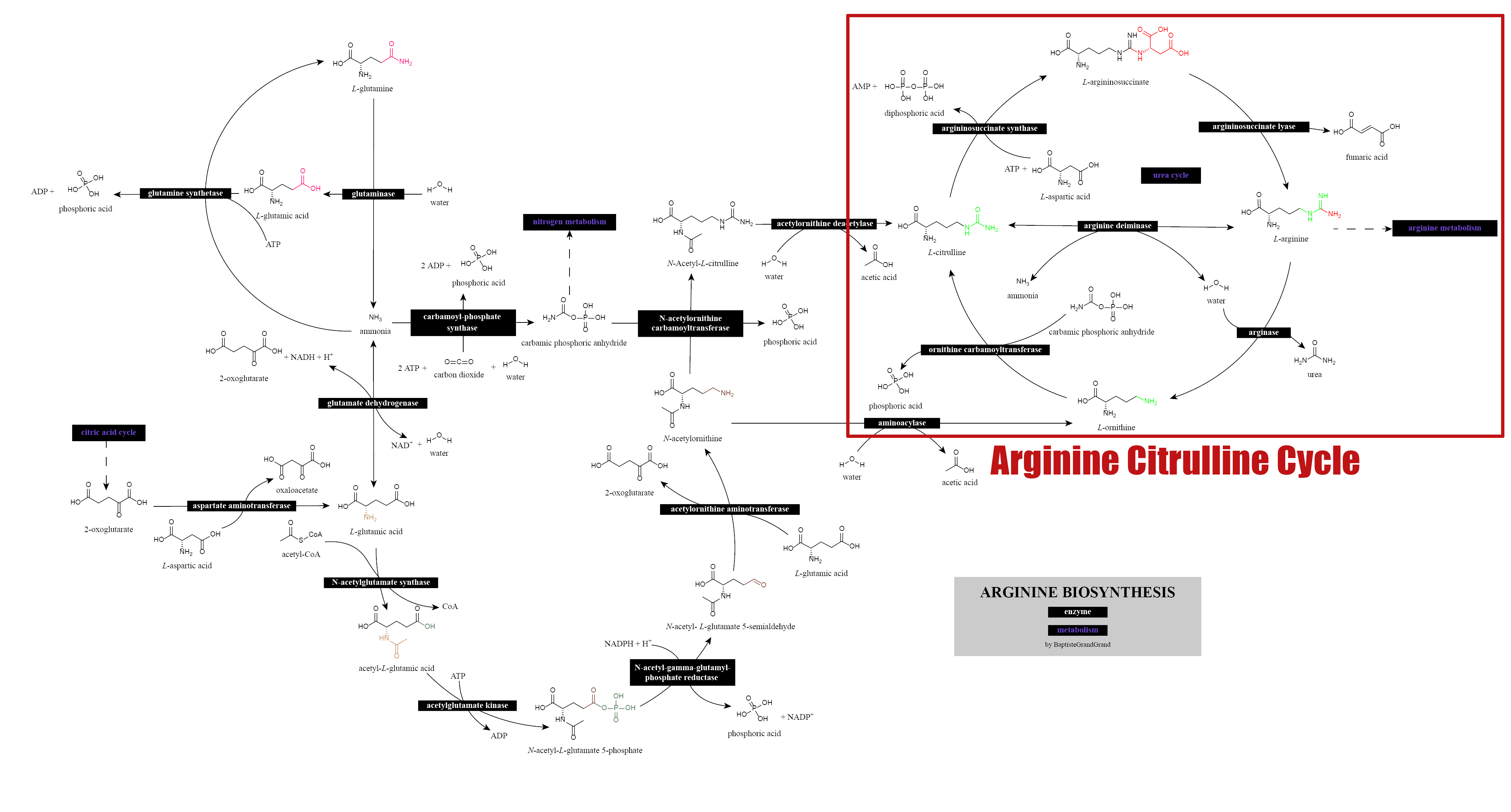
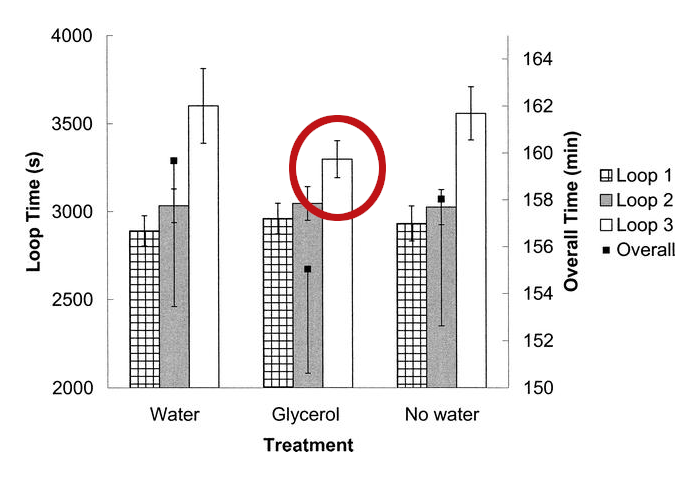
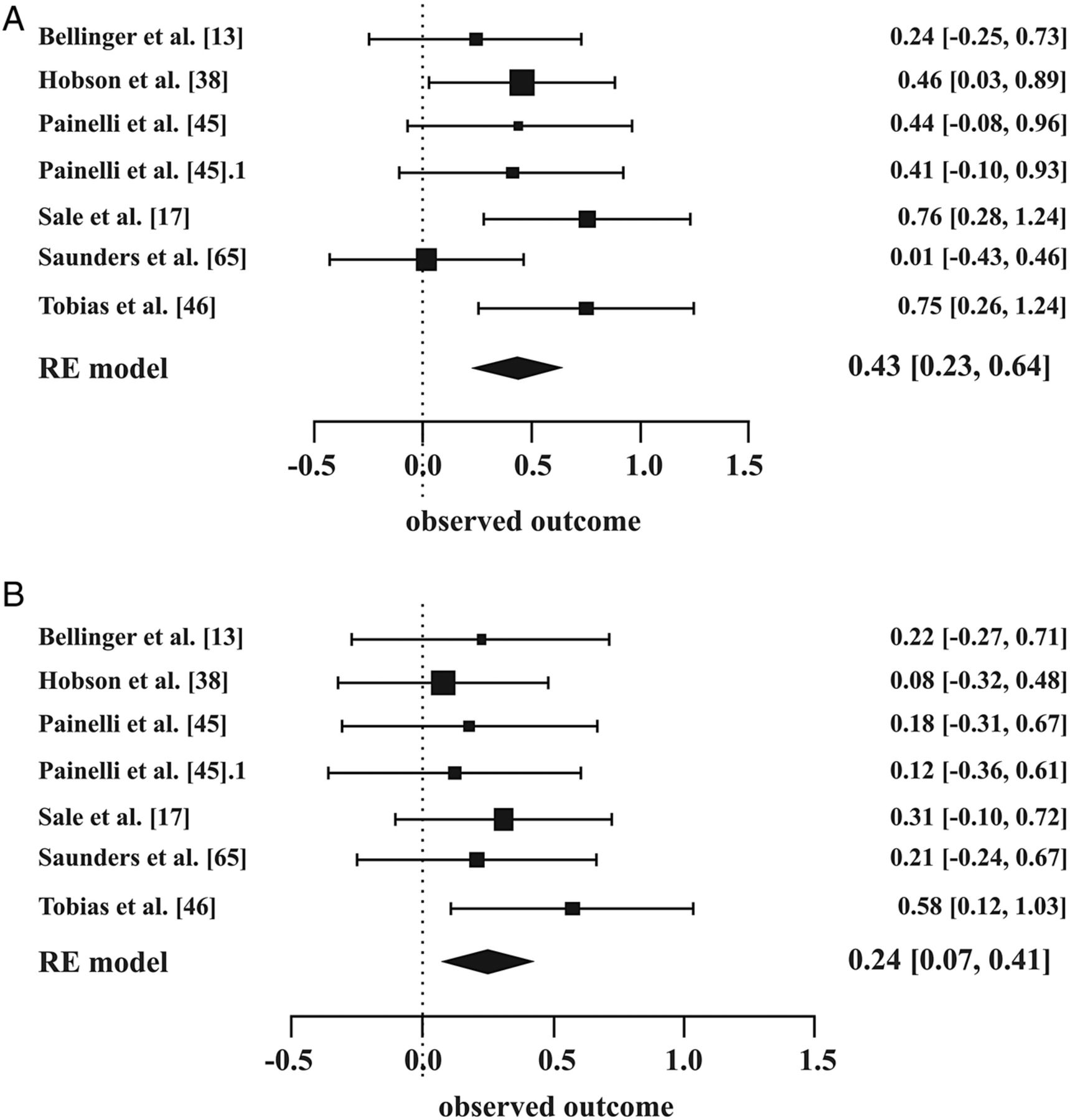
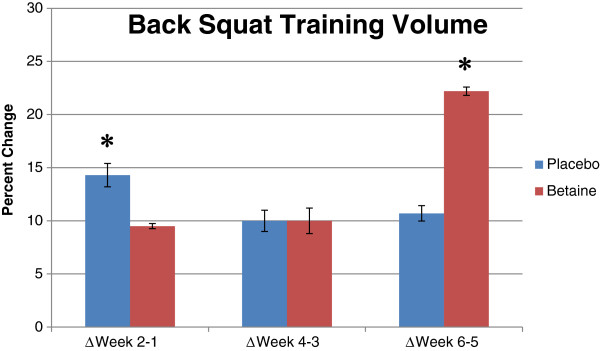

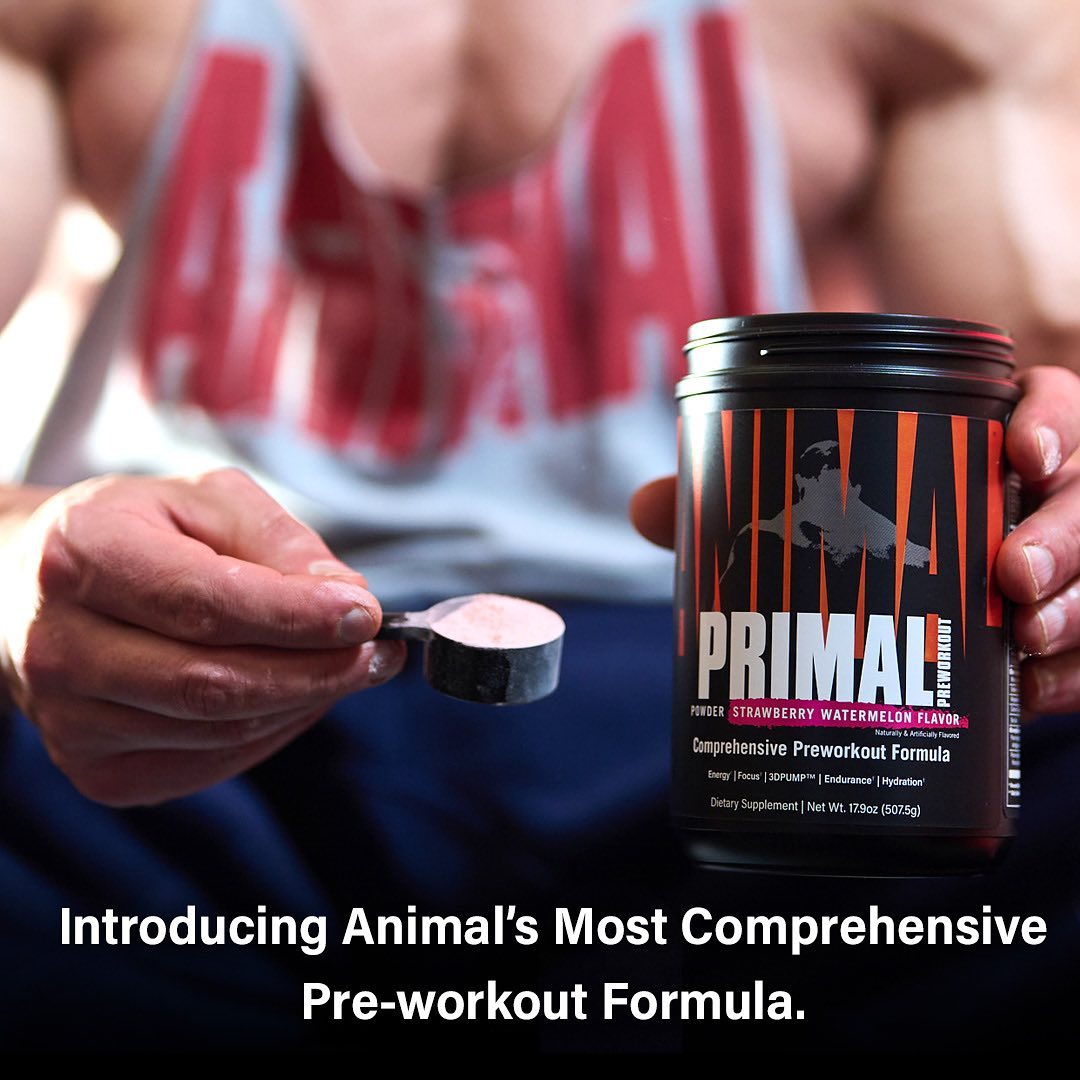
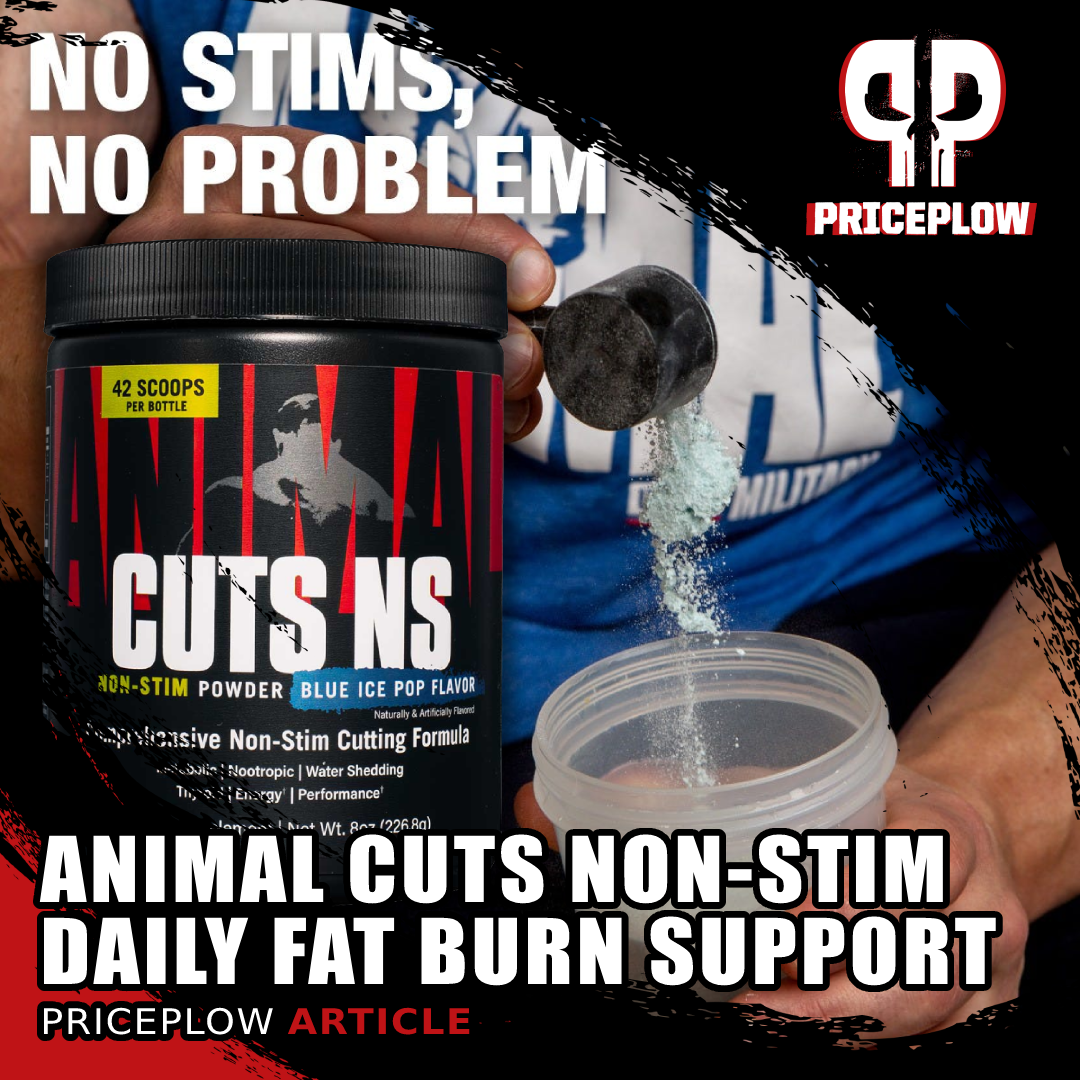



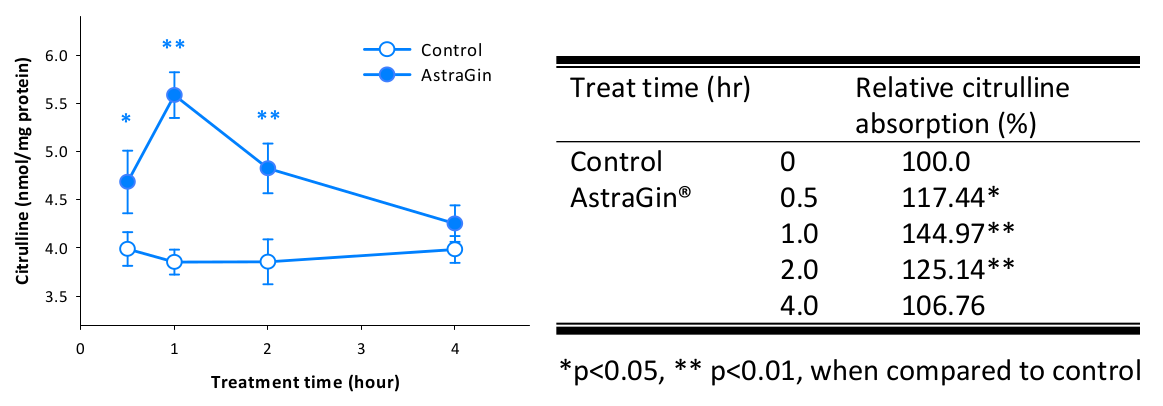



Comments and Discussion (Powered by the PricePlow Forum)